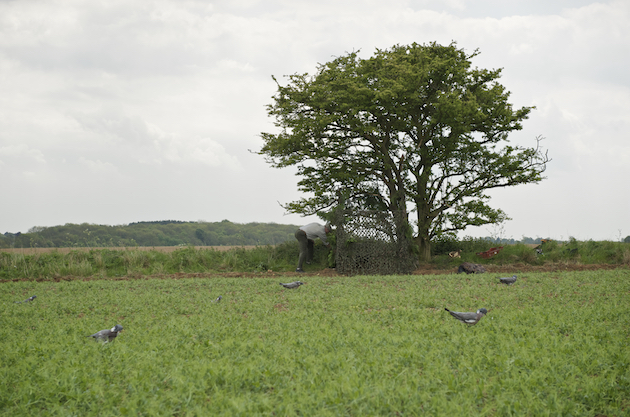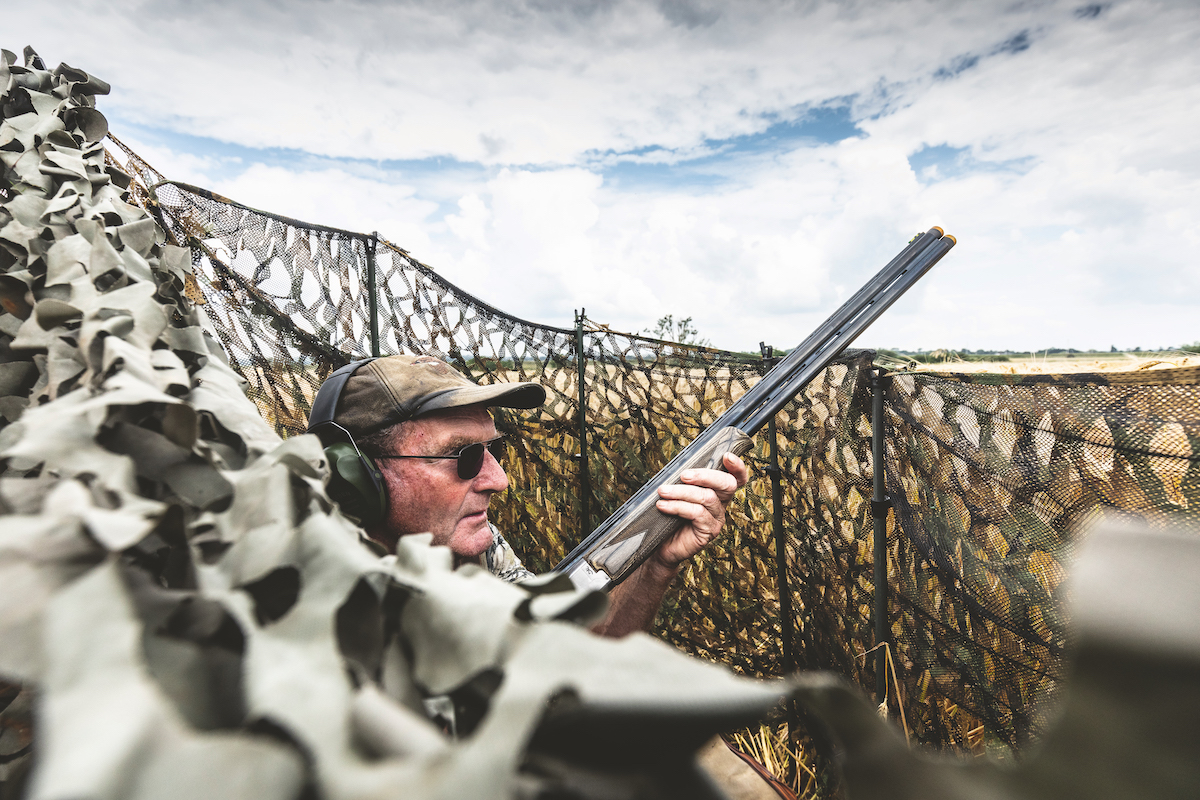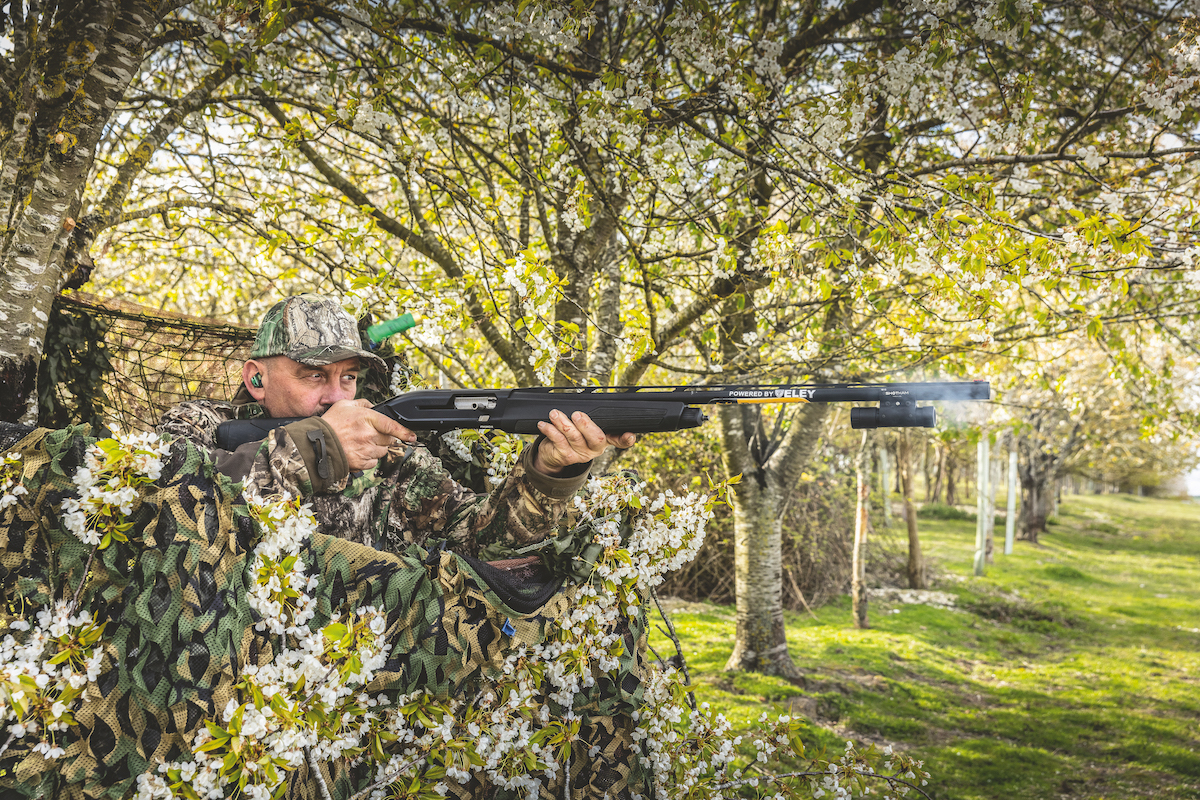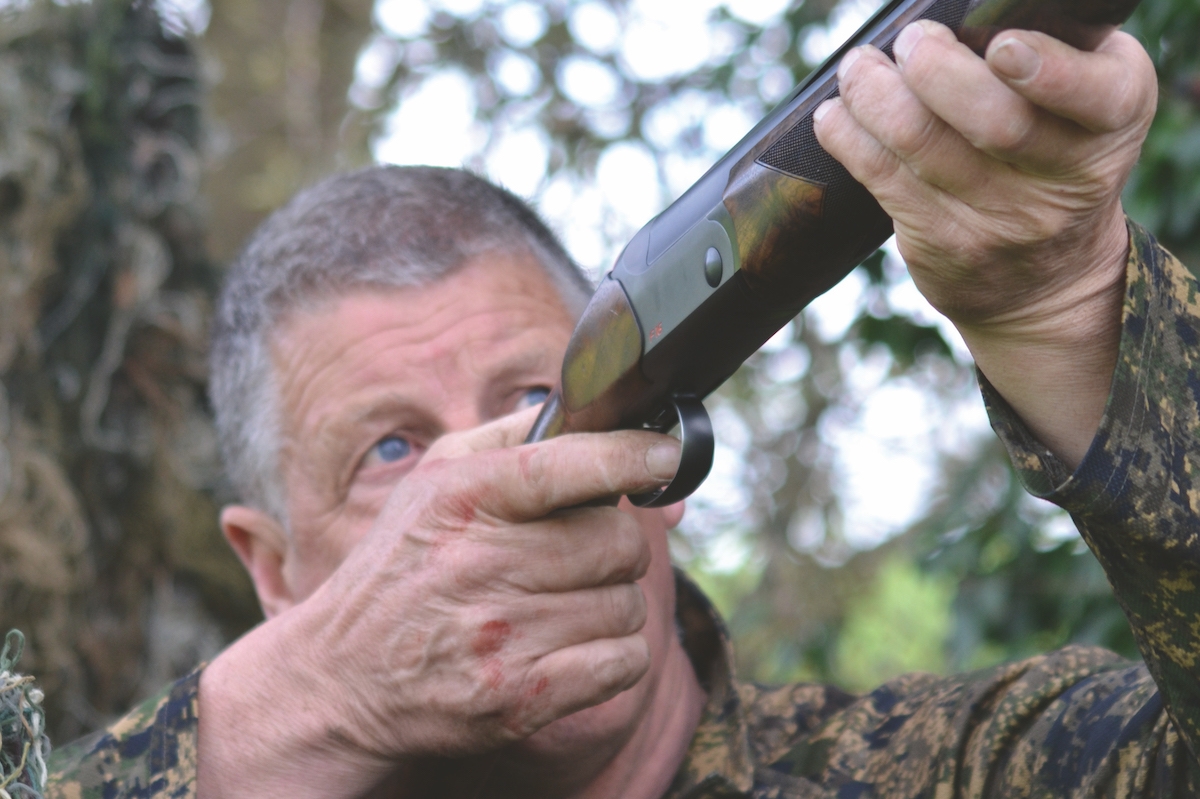How to position your pigeon hide
For maximum success your pigeon hide has to be in exactly the right place. However, many pigeon shooters know that getting this right is not always that straightforward.

A sitty tree
The first thing to do is find the field the pigeon are feeding on.
Then the next most important consideration is safety.
Tips to position your pigeon hide in a safe and appropriate place.
- Public footpaths are difficult and sometimes unavoidable. I frequently set up on them, as I believe it’s much safer than shooting over or towards them.
- In most cases you will not see anyone as a great number of these footpaths are used infrequently. When I do see a member of the public approaching I stand up to make myself visible before they reach my hide and, to prevent frightening them, I remove my facemask and greet them in a friendly manner.
- Public highways though are much more of a problem. Here we must observe the 50ft rule, which is the minimum legal distance we are allowed to fire from a public highway. This is measured from the crown of the road, and not the verge, which is approximately 17 paces; best make it 20 to be on the safe side. This in my opinion is still too close to a busy road, but perhaps reasonable on a quiet country lane. However do not shoot over, or towards, a public highway. If you are forced to set up this close, be aware of potential hazards, in particular horse riders.
- The dual carriageway/motorway boundary fence is normally far enough to be safe and legal. Most dual carriageways and motorways are not a problem because of the very wide embankments and distance from the road edge.
- Farm animals – apart from horses – are generally not a problem. Bullocks are inquisitive animals and can be a nuisance if in the same field – their favourite pastime is sniffing and kicking over decoys.
- Stay clear of horses, they spook easily. Don’t fire as they approach and give them time to pass by before you resume your shooting.
- Increasing numbers of people moving out from the towns and cities do not understand farming or the country way of life. So take great care when shooting anywhere near buildings of any kind.
- Consider the noise and wind direction. Sound is the main reason for me not shooting on Sundays. Otherwise I believe it’s reasonable to expect that people living in the country should accept all country noises – and that includes crowing cockerels and the sound of gunfire.
- Dropping shot is another point. Just how far shot will travel after it has left the barrel depends on shot size, type, make of cartridge, load size, and wind direction.
- It’s probably best not to fire towards buildings unless they are at least a quarter of a mile from your hide. Power cables and telephone wires on farms are usually connecting supplies to the farmer’s house so damaging them could really spoil neighbourly relations.
- Give cables a distance of at least 100 yards to be safe.

Get up within range of a sitty tree and you should get shots at perched birds rather than ones that are waddling around.
Using a sitty tree
The famous pigeon expert, Archie Coates, always maintained that using a ‘sitty’ tree is a definite advantage.
- Pigeons, especially when cautious, will frequently fly to a lone tree. Setting up within range of the tree will enable you to kill them as they approach it. Otherwise, it’s frustrating to watch pigeons heading for a tree which is out of range instead of coming into your decoys. They will rarely, if ever, decoy once they have settled close to your pattern.
- Being directly under the tree is not always a good idea because any birds that land in it will usually be too close to shoot and you will not see them during summer through the dense leaf cover.
- In addition, a sitty tree’s branches will restrict your swing when trying to shoot a high overhead target.
- Another advantage of a sitty tree is that in winter you can loft decoys into it to strengthen the pulling power of your decoy pattern on the ground.

Shooting in the shade has advantages
Sunshine and pigeon shooting
Most pigeon shooters like the sun to be located behind them when shooting. Remember that the sun’s position will alter as the day wears on, so prepare for this when building the hide.
The advantages to having the sun behind you are several. You will not be hindered by the glare of the sun in your face, especially during winter when it remains low or at its brightest in mid-summer. In summer you will be sitting in the shade keeping you and your dog cool and comfortable. Being shaded also allows you to use far less cover as incoming pigeons will not see you as they approach and you will spot the birds sooner. However you will need ample cover from behind to block out your outline.

Find out the wind direction
Wind direction
To find out which way the wind is blowing pull rump feathers from a dead bird, walk out to the decoy pattern and throw a few directly overhead
Several attempts at this will give a very accurate wind direction. Failing this use dead grass or straw. Wind direction can often change so be prepared to alter the pattern during the day, especially if birds start to skirt the pattern, rather than come straight in.
A few minor changes to the pattern to take account of the changed wind direction should get things back on track. Setting up directly under flight lines is the best place to be if possible. If you can’t get directly under the line get as close to it as you can. Modern decoying equipment such as floaters, flappers, and especially rotary machines are designed to pull the birds off their flight lines to your pattern.
How to build a pigeon hide
Pigeon shooting: Is it okay to build a hide in the centre of a field or is it best to…
What is the closest to a footpath or public road you can legally use a shotgun?
Where a field is bordered by a public footpath, what is the minimum distance at which one can safely and…
Avoid the corners of fields
Avoid setting up in the corner of a field which has high hedges and or trees. Pigeons tend to stay clear of such locations in fear that predators such as sparrowhawks approach unseen over and through the tree gaps to attack. You too could also be taken by surprise by pigeons using the same approach. Finally, your decoy pattern and rotary is not so visible to approaching birds.










